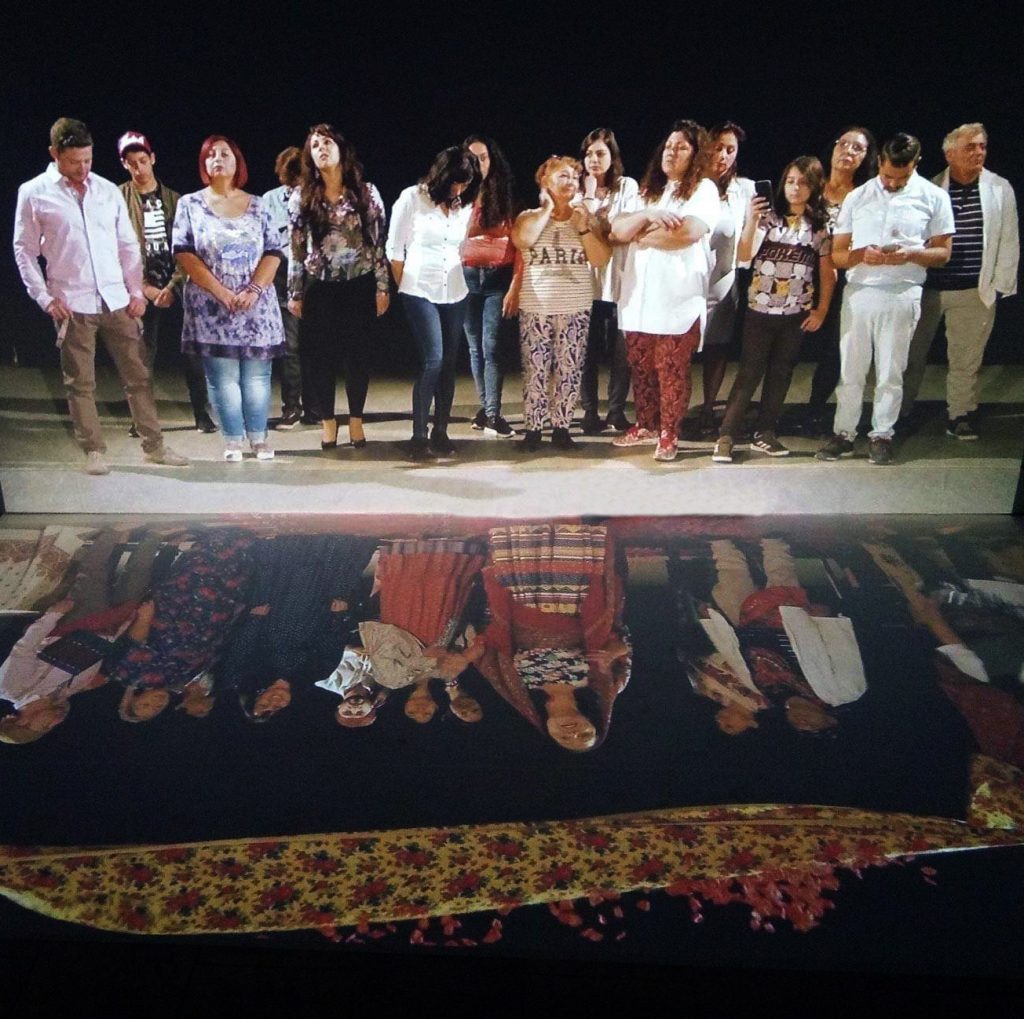Romanistan
|
Romanistan (for English scroll down) Práca reaguje na prvotnú myšlienku možnéj existencie Rómskeho štátu, ktorá vznikla v triciatich rokoch. Zároveň sa v nej prelína aj obdobie prvého Svetového Rómskeho kongresu, ktorý sa uskutočnil v roku 1971 v Orpingtone blýzko Londýna v Anglicku. Na kongrese bola zelená a modrá vlajka z konferencie Všeobecnej asociácie rumunských Rómov z roku 1933, zdobená červenou, šestnásťčlennou čakrou, opätovne potvrdená ako národný znak rómskeho národa a pieseň “Gelem, Gelem” bol prijatý ako rómska hymna. (“Gelem, Gelem” je skladba, ktorú vytvoril Žarko Jovanović v roku 1949) Videoinštalácia reflektuje utopistickú myšlienku Rómskeho štátu sebakriticky, ale zároveň aj kriticky poukazuje na vnimani romuv stereotypnim – orientalnim zpusobem ze strany väčšinovéj spoločnosti. Inštalácia sa skladá z dvoch video – sekvencií na ktorých môžme vidieť tých istých interprétov. Video s folklórným odevom symbolicky stvárňuje minulosť, ktorá zobrazuje tieň súčastnosti. Na druhéj strane naráža na orientalistické predstavy väčšinovéj spoločnosti, ktorá aj dodnes podvedomo stereotipizuje a automaticky Rómov dáva, spolu so súčastným Rómským umením do polohy folklórnej. Video ktoré reprezentuje národné obrodenie je prepojené z myšlienkou modernismu, teda Rómský štát je vnímaný cez historickú prizmu, ku ktorej patrý čiastočne vystúpiť zo svojich tradícií. A v tomto zmysle folklórné video je aj tieňom nás všetkých. Tento tieň sa môže stať pozitývnou súčasťou, alebo sa môže stať niečím, cez čo ani my, ale ani väčšinová spoločnosť, nikdy neprekročí… Kostýmy jsou vypůjčené z depozitáře z Muzea romské kultury v Brně.
Romanistan The work responds to the initial idea of the possible existence of the Romani state, which originated during the 1930s. It also blends the era of the First World Romani Congress, which took place in 1971 in Orpington, near London, England. At the congress, The Romani flag from 1933 was approved as the national emblem of the Romani nation. the flag consists of a background of blue and green, representing the heavens and earth, and the 16-spoke red chakra, or cartwheel, in the center. And the song “Gelem, Gelem” was accepted as the Roma anthem. (“Gelem, Gelem” is a song created by Žarko Jovanović in 1949) The video installation reflects the utopian idea of the Romani state in a self-critical but at the same time criticize the perception of Romani people by the majority society. The installation consists of two video channels on which we can see the same performers. The video with the Romani folk clothing symbolically depicts the past and reflects today’s stereotypes of the majority society, which systematically set the Romani, along with contemporary Roma art, in a folklore position. The video, which represents the national revival, is linked to the idea of modernism, ie the Roma state is perceived through the historical prism, to which it partially descends from its traditions. And in this sense, the folklore video is the shadow of us all. This shadow can become a positive part, or it can become something that neither we nor the majority society, will ever exceed… The costumes are borrowed from the depository of the Museum of Roma Culture in Brno. |
